The members of Rancid have been making punk music together for over 30 years. In that time, they’ve brought in a wide-ranging array of musical influences from reggae to speed metal. Some of these influences never quite fit the ska-punk/pop-punk mold well enough to make their way onto a Rancid album. But that’s what side projects are for! Three decades’ worth of musical spillover have given us an extensive list of Rancid’s side projects to review, so we decided to rank them from worst to best, in an article riddled with the author’s personal biases, and without peer review from any known scientific establishment.
Note: an exhaustive list of every project involving a member of Rancid would be far too much for one article. They’ve served as studio and touring musicians for other bands, and produced dozens of your favorite albums from all over the musical spectrum. (Hell, Tim Armstrong had a cameo in an episode of “The X-Files.”) For the sake of brevity, we’ve only ranked studio albums from bands which were started by members of Rancid after its inception.
DISHONORABLE MENTION: Transplants “Take Cover” (2017)
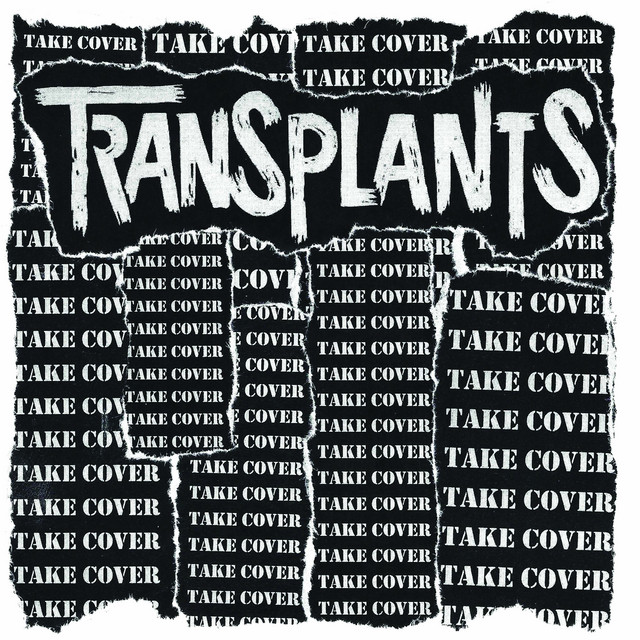 We wasted 17 minutes listening to this because it was incorrectly listed on a popular streaming service as an album, not an EP. We know, this list is only supposed to include studio albums, but we decided to review “Take Cover” anyway to spare you the same disappointment. In the years since their first albums’ success, the members of the Transplants had gone in such different directions that they didn’t sound like the Transplants anymore. Travis Barker decided he was going to be the official pop-punk drummer of hip hop, Rob Aston returned to the garage hardcore sound that had been dialed back on previous albums, and Tim Armstrong continued to talk-sing in the same slurred vocals he’d mastered over the last 30 years. There are only two original songs here, with the rest being mostly covers of ‘80s hardcore songs that are somehow made worse. The only song that even sounds like the early Transplants is aptly titled “Won’t Be Coming Back,” a promise we hope they keep if this is what future albums might sound like.
We wasted 17 minutes listening to this because it was incorrectly listed on a popular streaming service as an album, not an EP. We know, this list is only supposed to include studio albums, but we decided to review “Take Cover” anyway to spare you the same disappointment. In the years since their first albums’ success, the members of the Transplants had gone in such different directions that they didn’t sound like the Transplants anymore. Travis Barker decided he was going to be the official pop-punk drummer of hip hop, Rob Aston returned to the garage hardcore sound that had been dialed back on previous albums, and Tim Armstrong continued to talk-sing in the same slurred vocals he’d mastered over the last 30 years. There are only two original songs here, with the rest being mostly covers of ‘80s hardcore songs that are somehow made worse. The only song that even sounds like the early Transplants is aptly titled “Won’t Be Coming Back,” a promise we hope they keep if this is what future albums might sound like.
Play it again: “Won’t Be Coming Back”
Skip it: Anything from Transplants after 2005
12. Tim Timebomb “Tim Timebomb and Friends” (2014)
 This was probably a fun project to participate in but it’s not always a sonically pleasing end result. Starting in 2012, Tim Armstrong took it upon himself to release daily songs that mostly consisted of covers and one-off jam bands. This album is all over the map. The first dozen songs were originally released as a soundtrack for one of Armstrong’s video projects. After those, it’s a mostly unplugged and hard to follow hodgepodge of genres. Ever wanted to hear your favorite punk singer perform a ragtime cover of a classic punk song? We didn’t. There are a few original songs in here, including a couple that made it into future Rancid releases, but there is also a version of “Blue Skies” sung by Armstrong that Ella Fitzgerald would likely disapprove of. If you think this project is limited to the 34 songs on this album, guess again. This spanned hundreds of songs, from a wide range of genres and qualities.
This was probably a fun project to participate in but it’s not always a sonically pleasing end result. Starting in 2012, Tim Armstrong took it upon himself to release daily songs that mostly consisted of covers and one-off jam bands. This album is all over the map. The first dozen songs were originally released as a soundtrack for one of Armstrong’s video projects. After those, it’s a mostly unplugged and hard to follow hodgepodge of genres. Ever wanted to hear your favorite punk singer perform a ragtime cover of a classic punk song? We didn’t. There are a few original songs in here, including a couple that made it into future Rancid releases, but there is also a version of “Blue Skies” sung by Armstrong that Ella Fitzgerald would likely disapprove of. If you think this project is limited to the 34 songs on this album, guess again. This spanned hundreds of songs, from a wide range of genres and qualities.
Play it again: “Honor Is All We Know”
Skip it: “Blue Skies”
HONORABLE MENTION: The Old Firm Casuals “A Butcher’s Banquet” (2016)
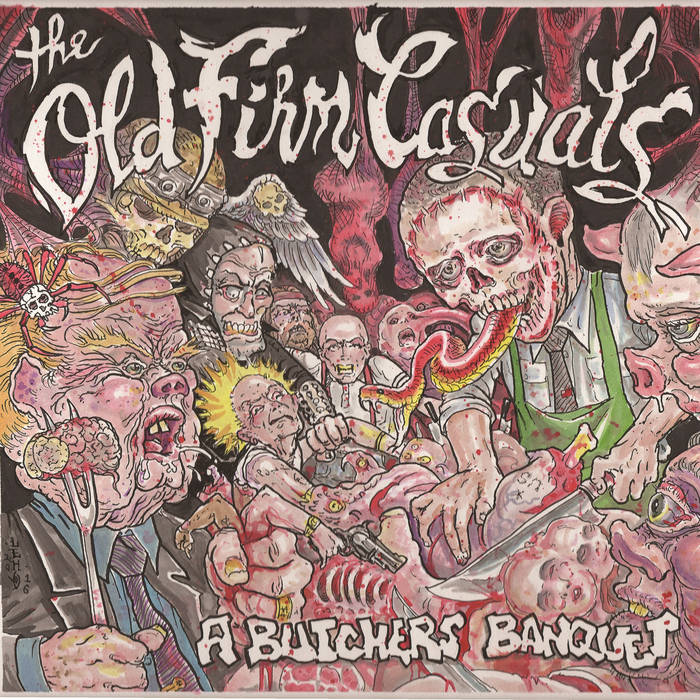 Another 17 minute EP labeled as an album on a streaming service? Who makes these decisions? Where exactly is the cutoff? We decided to unofficially include this one on the list because it’s good, just too short. Lars Frederiksen found the time in between recording and touring with Rancid, producing most of your favorite punk albums, and creating the anthem for the San Jose Earthquakes, to form yet another band. The Old Firm Casuals could be categorized as a mix of street punk and Oi! if that kind of thing is important to you, and this 7-song EP doesn’t have any room for slower songs to mix up the pacing, but the Casuals stray from this mold enough on their other albums that it doesn’t seem like a complete description of their style. This album’s title track is about as close as you’ll get to the arena rock influence seen on the Casuals’ other offerings.
Another 17 minute EP labeled as an album on a streaming service? Who makes these decisions? Where exactly is the cutoff? We decided to unofficially include this one on the list because it’s good, just too short. Lars Frederiksen found the time in between recording and touring with Rancid, producing most of your favorite punk albums, and creating the anthem for the San Jose Earthquakes, to form yet another band. The Old Firm Casuals could be categorized as a mix of street punk and Oi! if that kind of thing is important to you, and this 7-song EP doesn’t have any room for slower songs to mix up the pacing, but the Casuals stray from this mold enough on their other albums that it doesn’t seem like a complete description of their style. This album’s title track is about as close as you’ll get to the arena rock influence seen on the Casuals’ other offerings.
Play it again: “Killing Time”
Skip it: “Kampråb” only because it’s an instrumental intro song. On second thought, don’t skip this one. It blends perfectly into the beginning of “God and Guns” to start the album.
11. Transplants “In A Warzone” (2013)
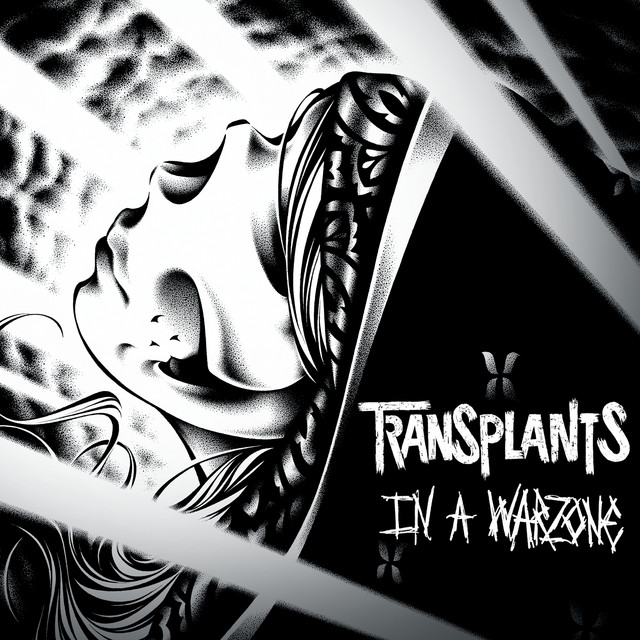 The blend of punk and rap that worked so well on “Transplants” and “Haunted Cities” wasn’t pulling its weight in 2013. “In A Warzone” has less of the musical experimentation found on the Transplants first two albums, opting instead to lean further into their hardcore roots. During the band’s 8-year hiatus, Travis Barker and Skinhead Rob teamed up with Paul Wall to make a terrible hip hop group called Expensive Taste that churned out songs about drinking cough syrup and buying jewelry. Maybe they wanted to differentiate their punk supergroup from their rap supergroup when they reunited with Tim Armstrong for another Transplants release? This is not necessarily a bad album, it just feels like the group has lost a bit of their identity as the members have focused on their own projects and drifted apart musically.
The blend of punk and rap that worked so well on “Transplants” and “Haunted Cities” wasn’t pulling its weight in 2013. “In A Warzone” has less of the musical experimentation found on the Transplants first two albums, opting instead to lean further into their hardcore roots. During the band’s 8-year hiatus, Travis Barker and Skinhead Rob teamed up with Paul Wall to make a terrible hip hop group called Expensive Taste that churned out songs about drinking cough syrup and buying jewelry. Maybe they wanted to differentiate their punk supergroup from their rap supergroup when they reunited with Tim Armstrong for another Transplants release? This is not necessarily a bad album, it just feels like the group has lost a bit of their identity as the members have focused on their own projects and drifted apart musically.
Play it again: “Come Around”
Skip it: “It’s A Problem”
HONORABLE MENTION: Charger “Self-Titled” (2019)
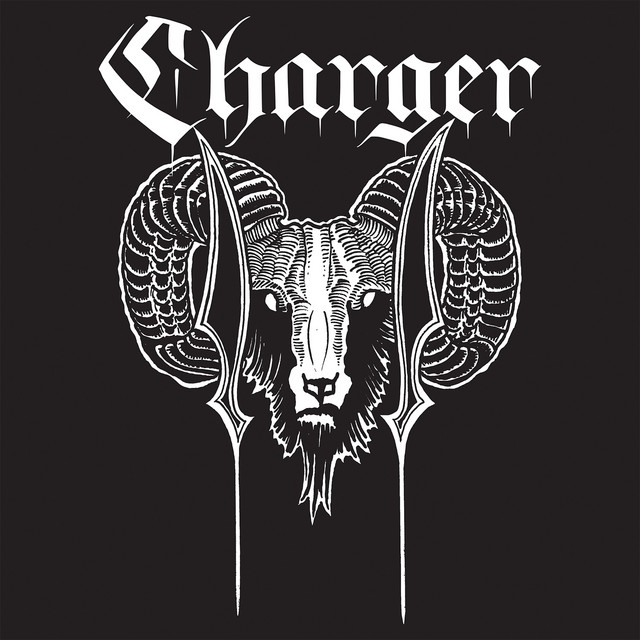 This one is actually labeled as an EP on streaming services despite being longer than the other two miscategorized EPs we’ve already listed here, and of course we’re going to include it because the “studio albums only” rule was our own creation in the first place. Matt Freeman takes listeners further away from his Rancid roots with this speed metal side-project than any album released by one of his bandmates. If you’ve ever found yourself wondering “what if Motorhead was fronted by a ska-punk backing vocalist?” Charger is what you’re looking for. We recommend starting with “Damage” to fully appreciate how Freeman’s bass playing fits into any genre he feels like playing at the time, even if the song seems like it was only included on the album for the sake of a bass solo. If you’re a fan in general of Matt Freeman’s gruff vocals, this project is worth checking out. But if you love Rancid’s more radio-friendly offerings over their less “pop-punk” deep cuts, Charger might not be what you’re looking for.
This one is actually labeled as an EP on streaming services despite being longer than the other two miscategorized EPs we’ve already listed here, and of course we’re going to include it because the “studio albums only” rule was our own creation in the first place. Matt Freeman takes listeners further away from his Rancid roots with this speed metal side-project than any album released by one of his bandmates. If you’ve ever found yourself wondering “what if Motorhead was fronted by a ska-punk backing vocalist?” Charger is what you’re looking for. We recommend starting with “Damage” to fully appreciate how Freeman’s bass playing fits into any genre he feels like playing at the time, even if the song seems like it was only included on the album for the sake of a bass solo. If you’re a fan in general of Matt Freeman’s gruff vocals, this project is worth checking out. But if you love Rancid’s more radio-friendly offerings over their less “pop-punk” deep cuts, Charger might not be what you’re looking for.
Play it again: “All Kings Must Die”
Skip it: It’s hard to pick one from a 20-minute EP that all sounds the same.
10. Charger “Warhorse” (2022)
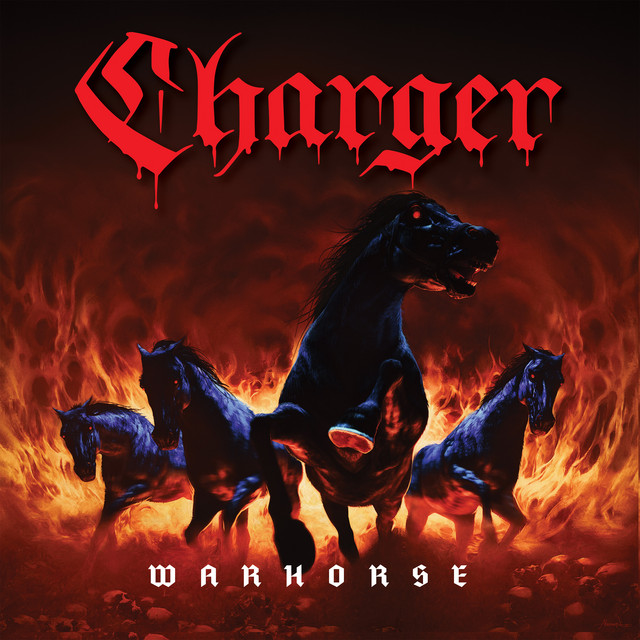 You thought you were done reading about Charger? Wrong! Freeman and friends returned after three years off with a well polished full-length release. If their self-titled EP served as proof-of-concept that a punk musician could actually make a decent metal album, “Warhorse” showed that Charger could make a GREAT metal album. It’s easy to forget while listening that this ranking also includes a psychobilly album from the same singer. Or that this album is from 2022, not the early 1980s. Matt Freeman shows his range as a musical chameleon; happy to be onstage singing and playing bass for any genre of music, as long as the guitars are loud and the lyrics are shouted in his trademark growl. This album would be a welcome addition to the rotation of heavy metal albums your neighbor blasts in his garage while he tries in vain to get that goddamn Camaro running again.
You thought you were done reading about Charger? Wrong! Freeman and friends returned after three years off with a well polished full-length release. If their self-titled EP served as proof-of-concept that a punk musician could actually make a decent metal album, “Warhorse” showed that Charger could make a GREAT metal album. It’s easy to forget while listening that this ranking also includes a psychobilly album from the same singer. Or that this album is from 2022, not the early 1980s. Matt Freeman shows his range as a musical chameleon; happy to be onstage singing and playing bass for any genre of music, as long as the guitars are loud and the lyrics are shouted in his trademark growl. This album would be a welcome addition to the rotation of heavy metal albums your neighbor blasts in his garage while he tries in vain to get that goddamn Camaro running again.
Play it again: “Rolling Through The Night”
Skip it: “Dig Your Own Grave”
9. The Old Firm Casuals “For the Love of it All…” (2013)
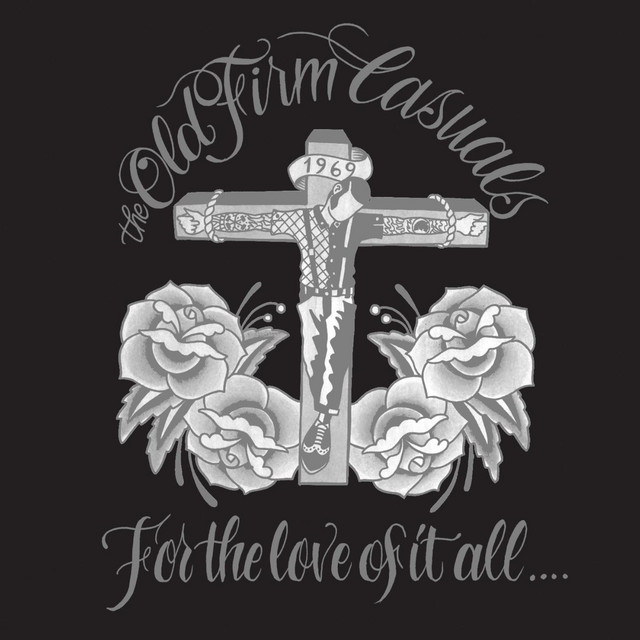 Finally, a 24-song album reaching an unusual-for-punk-music runtime of well over an hour. There is no chance that this one could be a miscategorized EP, because it’s actually a remastered collection of several singles and EPs that pushed the limits of what could fit on a single CD, back when a few holdouts still bought physical media. This is everything you could ask for from a DIY Oi! band. The music itself is as violent as the lyrics. Listeners are assaulted with gritty, fast-paced street-punk songs about familiar tropes of fighting, drinking, scene unity, and standing up to the system. Songs like the Casuals’ cover of “Violence in Our Minds” and “D.M.D.P.” (short for “Doc Marten Dental Plan”) remind listeners that even the profoundly anti-racist kind of skinhead punks are still likely to kick you in the fucking teeth if they feel it’s necessary. Or if they get bored. As long as somebody gets kicked in the teeth. This is the way.
Finally, a 24-song album reaching an unusual-for-punk-music runtime of well over an hour. There is no chance that this one could be a miscategorized EP, because it’s actually a remastered collection of several singles and EPs that pushed the limits of what could fit on a single CD, back when a few holdouts still bought physical media. This is everything you could ask for from a DIY Oi! band. The music itself is as violent as the lyrics. Listeners are assaulted with gritty, fast-paced street-punk songs about familiar tropes of fighting, drinking, scene unity, and standing up to the system. Songs like the Casuals’ cover of “Violence in Our Minds” and “D.M.D.P.” (short for “Doc Marten Dental Plan”) remind listeners that even the profoundly anti-racist kind of skinhead punks are still likely to kick you in the fucking teeth if they feel it’s necessary. Or if they get bored. As long as somebody gets kicked in the teeth. This is the way.
Play it again: “A Gang Like Us”
Skip it: “The Rabble”
8. The Old Firm Casuals “This Means War” (2014)
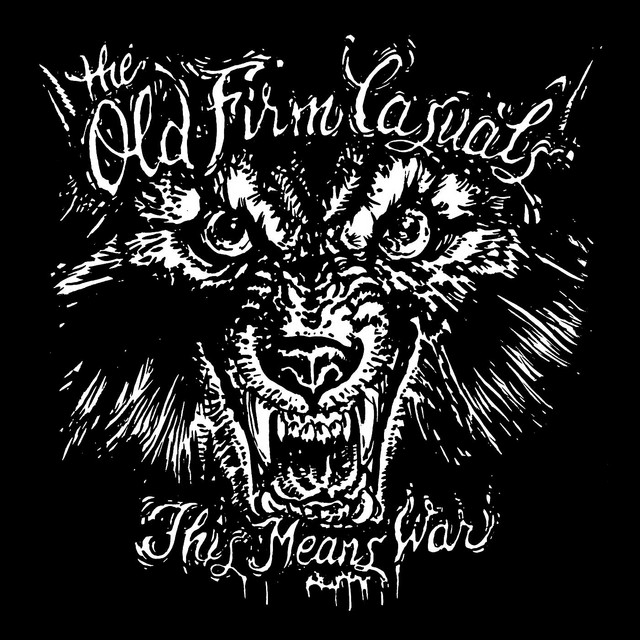 This was technically the Casuals’ first LP release, but at this point, we’ve lost track of the difference between EP and LP entirely. Maybe it never mattered? “This Means War” features more gang vocals and fewer specific threats of violence. The lyrics instead focus on vague threats of violence and references to war. Ok, maybe “Off With Their Heads” has some pretty specific lines about beheading pedophiles, but it’s nice to hear them take a stance and preach violence-for-good to an audience that would be happy to oblige given the chance. Those unfamiliar with football subcultures (we mean the soccer kind of “football” here, not the American kind) might be confused by the fact that this album dedicates two of its thirteen songs to the sport. “Perry Boys” is a nod to the well-dressed UK hooligans known as “Casuals” (Hey, that word is in the band’s name!). While “Never Say Die” was written and recorded to be the official song of Frederiksen’s beloved San Jose Earthquakes.
This was technically the Casuals’ first LP release, but at this point, we’ve lost track of the difference between EP and LP entirely. Maybe it never mattered? “This Means War” features more gang vocals and fewer specific threats of violence. The lyrics instead focus on vague threats of violence and references to war. Ok, maybe “Off With Their Heads” has some pretty specific lines about beheading pedophiles, but it’s nice to hear them take a stance and preach violence-for-good to an audience that would be happy to oblige given the chance. Those unfamiliar with football subcultures (we mean the soccer kind of “football” here, not the American kind) might be confused by the fact that this album dedicates two of its thirteen songs to the sport. “Perry Boys” is a nod to the well-dressed UK hooligans known as “Casuals” (Hey, that word is in the band’s name!). While “Never Say Die” was written and recorded to be the official song of Frederiksen’s beloved San Jose Earthquakes.
Play it again: “Victory”
Skip it: “Dear Leader”
7. Devil’s Brigade “Self-Titled” (2010)
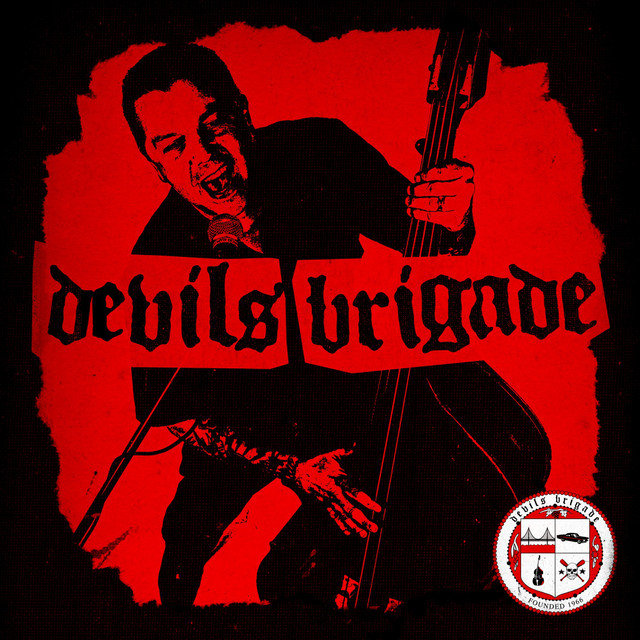 Matt Freeman takes center stage with an upright bass in this psychobilly spinoff. The original plan was for this to be a musical called “Half Way To Hell” about the construction of Golden Gate Bridge. There was a saying at the time that a worker had “gone to hell” if they died by falling off the bridge. The men who were saved by safety netting started the Half Way To Hell Club, whose objective has been lost to history. We know, this is a depressing idea for a musical, but it worked well as the last song on Devil’s Brigade’s only album. This, along with 5 other bridge-inspired songs written by Freeman and Rancid bandmate Tim Armstrong, make up half of a concept album. The other 6 songs are Freeman originals that were originally released as singles and B-sides. Devil’s Brigade made sure to include a few lyrics about vampires, death, and motorcycles to keep this project grounded in appropriate tropes for the genre.
Matt Freeman takes center stage with an upright bass in this psychobilly spinoff. The original plan was for this to be a musical called “Half Way To Hell” about the construction of Golden Gate Bridge. There was a saying at the time that a worker had “gone to hell” if they died by falling off the bridge. The men who were saved by safety netting started the Half Way To Hell Club, whose objective has been lost to history. We know, this is a depressing idea for a musical, but it worked well as the last song on Devil’s Brigade’s only album. This, along with 5 other bridge-inspired songs written by Freeman and Rancid bandmate Tim Armstrong, make up half of a concept album. The other 6 songs are Freeman originals that were originally released as singles and B-sides. Devil’s Brigade made sure to include a few lyrics about vampires, death, and motorcycles to keep this project grounded in appropriate tropes for the genre.
Play it again: “Gentleman Of The Road”
Skip it: “Bridge Of Gold” is good but it sounds out of place on this album
6. Tim Armstrong “A Poet’s Life” (2007)
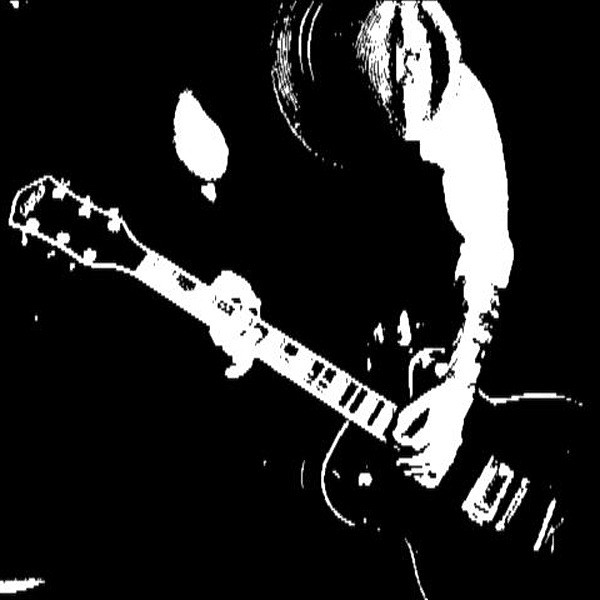 While most of these side-projects focused on styles that were lyrically or musically too “hard” to end up on a Rancid album, Tim Armstrong took his solo project to the opposite extreme. This is a well produced tribute to early ska/reggae from a punk rocker who might just be a bigger fan of the genre than Joe Strummer himself. Hellcat’s own The Aggrolites served as Armstrong’s backing band for this album, but it doesn’t sound like “The Aggrolites with Tim Armstrong.” This project is its own entity, perfectly contained in a single album that would meet any pedant’s definition of LP, though just barely, at 10 songs and 33 minutes in length. The songs from “A Poet’s Life” would fit right in on an album from 1960’s Jamaica, if not for their numerous references to the East Bay.
While most of these side-projects focused on styles that were lyrically or musically too “hard” to end up on a Rancid album, Tim Armstrong took his solo project to the opposite extreme. This is a well produced tribute to early ska/reggae from a punk rocker who might just be a bigger fan of the genre than Joe Strummer himself. Hellcat’s own The Aggrolites served as Armstrong’s backing band for this album, but it doesn’t sound like “The Aggrolites with Tim Armstrong.” This project is its own entity, perfectly contained in a single album that would meet any pedant’s definition of LP, though just barely, at 10 songs and 33 minutes in length. The songs from “A Poet’s Life” would fit right in on an album from 1960’s Jamaica, if not for their numerous references to the East Bay.
Play it again: “Into Action”
Skip it: “Cold Blooded”
5. Lars Frederiksen And The Bastards “Viking” (2004)
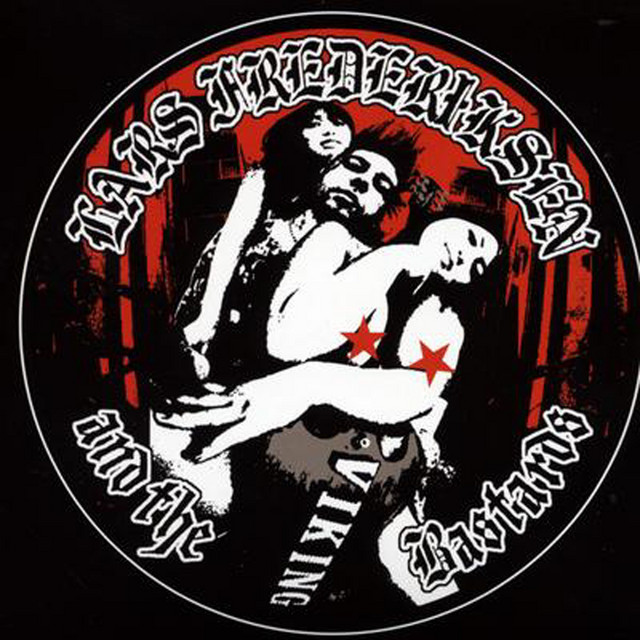 This was the second and final album from Frederiksen’s solo project. It’s slightly tamer than his self-titled release from 2001, but this album is by no means a relaxing listen from this veteran of street punk. There are several songs that race to the end in under a minute. We’re treated to Lars’ favorite lyrical themes of street violence and gang fights. But there is also a cover of the Blasters’ “Marie Marie” and the Bastards’ original “Little Rude Girl” to shake things up with stories of love and longing. Shortly after these, the Bastards bring it back home with “Mainling Murder”, with its screamed lyrics about disposing of a body. The only song that feels out of place on this album is “My Life”, in which Tim Armstrong joined Frederiksen to sing us a song about all the women they’ve slept with, which likely had more to do with Armstrong’s recent divorce than any genuine affinity for sex workers or groupies.
This was the second and final album from Frederiksen’s solo project. It’s slightly tamer than his self-titled release from 2001, but this album is by no means a relaxing listen from this veteran of street punk. There are several songs that race to the end in under a minute. We’re treated to Lars’ favorite lyrical themes of street violence and gang fights. But there is also a cover of the Blasters’ “Marie Marie” and the Bastards’ original “Little Rude Girl” to shake things up with stories of love and longing. Shortly after these, the Bastards bring it back home with “Mainling Murder”, with its screamed lyrics about disposing of a body. The only song that feels out of place on this album is “My Life”, in which Tim Armstrong joined Frederiksen to sing us a song about all the women they’ve slept with, which likely had more to do with Armstrong’s recent divorce than any genuine affinity for sex workers or groupies.
Play it again: “Fight”
Skip it: “Blind Ambition”
4. Transplants “Haunted Cities” (2005)
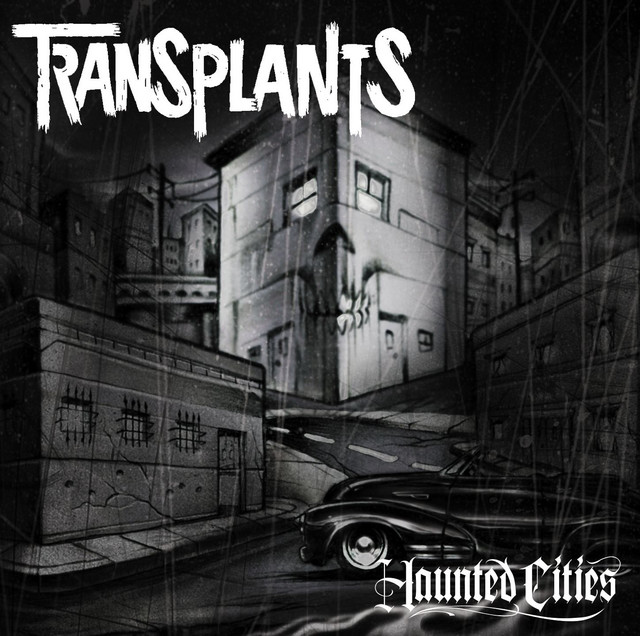 Transplants continued to make the same style of punk/rap fusion that had made them famous with their self-titled debut three years earlier. The guest vocals on “Haunted Cities” have definitely skewed more into the realm of hip hop than punk, and this marks the beginning of a shift in the band’s overall sound. If the Transplants’ first release was an experimental punk album with rap influence, this second one is more of a rap concept album with punk musicians backing Skinhead Rob’s furious vocals. “Haunted Cities” was panned by critics when it was released, presumably because they expected much more of a “punk” record from the likes of Tim Armstrong and Travis Barker. Check out “American Guns” for one of the better examples of both singers’ rap qualifications paired with Barker’s legendary punk drumming. Though this wasn’t as much of a commercial hit as the Transplants’ debut, it’s still a solid addition to the extended Rancidverse.
Transplants continued to make the same style of punk/rap fusion that had made them famous with their self-titled debut three years earlier. The guest vocals on “Haunted Cities” have definitely skewed more into the realm of hip hop than punk, and this marks the beginning of a shift in the band’s overall sound. If the Transplants’ first release was an experimental punk album with rap influence, this second one is more of a rap concept album with punk musicians backing Skinhead Rob’s furious vocals. “Haunted Cities” was panned by critics when it was released, presumably because they expected much more of a “punk” record from the likes of Tim Armstrong and Travis Barker. Check out “American Guns” for one of the better examples of both singers’ rap qualifications paired with Barker’s legendary punk drumming. Though this wasn’t as much of a commercial hit as the Transplants’ debut, it’s still a solid addition to the extended Rancidverse.
Play it again: “Gangsters and Thugs”
Skip it: “Pay Any Price”
3. Lars Frederiksen And The Bastards “Self-Titled” (2001)
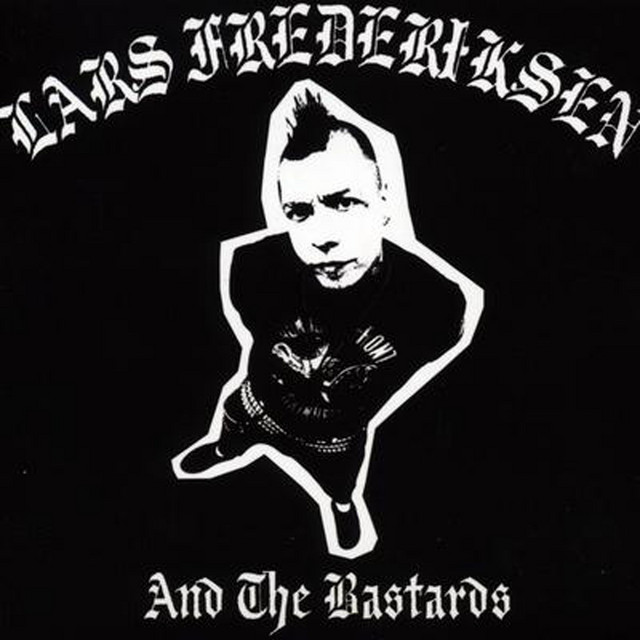 This was the first ever release from a Rancid side-project. It is a showcase of Lars Frederiksen as a punk vocalist, as well as a perfect street punk album from start to finish. The raspy vocals on “Ten Plagues Of Egypt” are enough to make you wonder how a person could sing like this for 30 years without damaging their voice. This album makes the band’s anti-war and anti-government opinions clear from the opening “Dead Americans” through the closing “Vietnam.” The lyrics once again focus on fighting, drinking, and having to grow up tough to survive. Even the Bastards’ cover of Billy Bragg’s “To Have And To Have Not” fits the album’s theme of a working class punk struggling his way through an unfair system. This debut release from the Bastards served as an outlet for lyrical themes that were a bit too “hard” for most Rancid fans, while establishing that the existing members of Rancid could pursue their side projects without breaking up the band.
This was the first ever release from a Rancid side-project. It is a showcase of Lars Frederiksen as a punk vocalist, as well as a perfect street punk album from start to finish. The raspy vocals on “Ten Plagues Of Egypt” are enough to make you wonder how a person could sing like this for 30 years without damaging their voice. This album makes the band’s anti-war and anti-government opinions clear from the opening “Dead Americans” through the closing “Vietnam.” The lyrics once again focus on fighting, drinking, and having to grow up tough to survive. Even the Bastards’ cover of Billy Bragg’s “To Have And To Have Not” fits the album’s theme of a working class punk struggling his way through an unfair system. This debut release from the Bastards served as an outlet for lyrical themes that were a bit too “hard” for most Rancid fans, while establishing that the existing members of Rancid could pursue their side projects without breaking up the band.
Play it again: “Dead Americans”
Skip it: “Anti Social” maybe? We’re reaching here. This entire album is solid.
2. Transplants “Self-Titled” (2002)
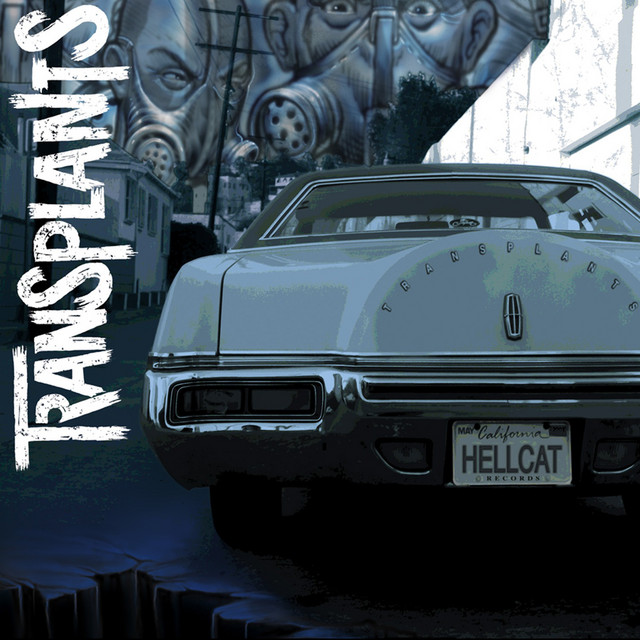 Between 2000 and 2005, the members of Rancid churned out new music like nobody else. Within five years, they gave us 2 Rancid releases, two solo albums from Lars Frederiksen, and two albums from Tim Armstrong’s supergroup side-project, including this instant classic. This album was the result of two years of basement jam sessions between Armstrong and Aston. Thankfully, they came to their senses and decided to use live drums rather than the loops they had originally recorded with. If anyone questioned the rockstar Armstrong’s decision to take backseat to the vocals of then-unknown “Skinhead Rob” Aston, their doubts were crushed by the raw power of Aston’s screamed, and at times hoarse, vocals. An instrumental version of the album’s debut single “Diamonds And Guns” was featured in shampoo commercials in the early 2000s by executives who probably didn’t realize the lyrics of the song were about drug use and murder, including the line “who’s the fucking bitch who stole all the heroin.” It’s a shining example of a song’s lyrics betraying its commercial-friendly exterior.
Between 2000 and 2005, the members of Rancid churned out new music like nobody else. Within five years, they gave us 2 Rancid releases, two solo albums from Lars Frederiksen, and two albums from Tim Armstrong’s supergroup side-project, including this instant classic. This album was the result of two years of basement jam sessions between Armstrong and Aston. Thankfully, they came to their senses and decided to use live drums rather than the loops they had originally recorded with. If anyone questioned the rockstar Armstrong’s decision to take backseat to the vocals of then-unknown “Skinhead Rob” Aston, their doubts were crushed by the raw power of Aston’s screamed, and at times hoarse, vocals. An instrumental version of the album’s debut single “Diamonds And Guns” was featured in shampoo commercials in the early 2000s by executives who probably didn’t realize the lyrics of the song were about drug use and murder, including the line “who’s the fucking bitch who stole all the heroin.” It’s a shining example of a song’s lyrics betraying its commercial-friendly exterior.
Play it again: “Quick Death” pairs Skinhead Rob in a memorable shouting match with AFI’s Davey Havok
Skip it: “We Trusted You”
1. The Old Firm Casuals “Holger Danske” (2019)
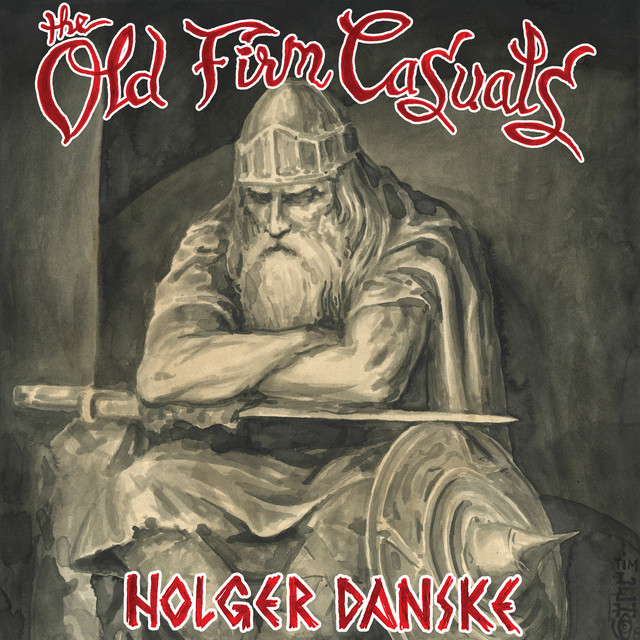 Lars Frederiksen has always written occasional lyrics referencing his Danish ancestry, but on “Holger Danske” they have become the main attraction. This album’s name is derived from the Danish legend of a sleeping giant who would someday awaken when the nation was in danger. The Casuals dropped this masterpiece on an unprepared public in 2019 and, after a supporting tour, have returned to their slumber, waiting for the Oi! scene’s next time of need. The album’s influences go above and beyond the “street-punk and Oi!” that you will see used to describe everything Frederiksen releases. There are clear influences from classic rock and metal. “Casual Rock-n-Roll” is enough of an instant shout-along favorite that it should be the name of the Casuals’ genre itself, which may have been their intent. Whichever genre’s fandom drove you to check out the Old Firm Casuals, it’s likely that you returned to your friends with tales of Viking funerals and the Casuals’ anti-government anthems fresh on your mind.
Lars Frederiksen has always written occasional lyrics referencing his Danish ancestry, but on “Holger Danske” they have become the main attraction. This album’s name is derived from the Danish legend of a sleeping giant who would someday awaken when the nation was in danger. The Casuals dropped this masterpiece on an unprepared public in 2019 and, after a supporting tour, have returned to their slumber, waiting for the Oi! scene’s next time of need. The album’s influences go above and beyond the “street-punk and Oi!” that you will see used to describe everything Frederiksen releases. There are clear influences from classic rock and metal. “Casual Rock-n-Roll” is enough of an instant shout-along favorite that it should be the name of the Casuals’ genre itself, which may have been their intent. Whichever genre’s fandom drove you to check out the Old Firm Casuals, it’s likely that you returned to your friends with tales of Viking funerals and the Casuals’ anti-government anthems fresh on your mind.
Play it again: “Casual Rock-n-Roll”
Skip it: “The Golden Fall, Pt. 1”
HONORABLE MENTION: Operation Ivy “Energy” (1989)
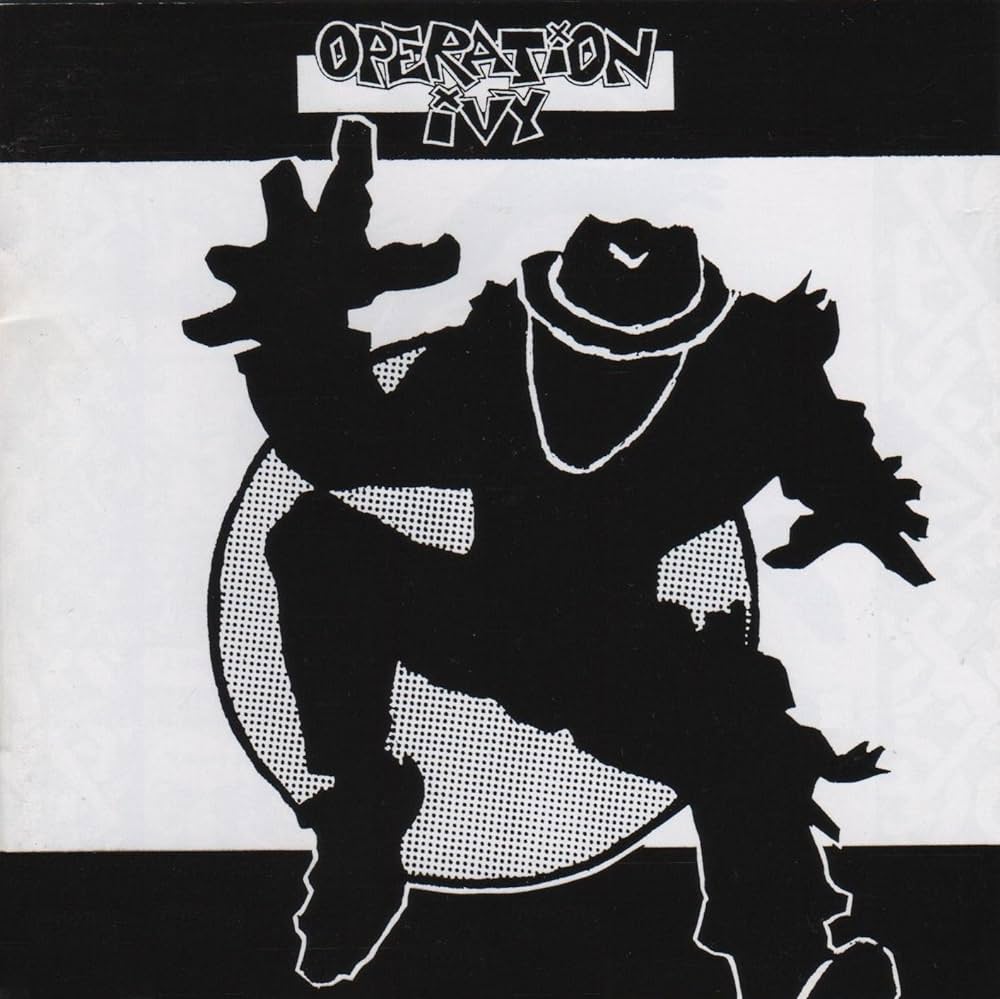 We get it, you kept frantically scrolling down to make sure Operation Ivy was in this article somewhere. Because you don’t listen. We said only albums made by members of Rancid AFTER the band’s inception would make the list. So “Energy” is disqualified on a technicality. But if we were ranking it, it would clearly be the best non-Rancid Rancid project of all time. Freeman and Armstrong, along with Jesse Michaels and Dave Mello, only played as Operation Ivy long enough to record a single LP. They parted ways two months later. Yet this one ska-punk album was so influential that every punk in the ‘90s would be called a poser for not including it when they listed their favorites. (Note: you will more likely find this album in its self-titled reissue form, which included 8 additional tracks). Now that you’ve gotten your fix of Op Ivy for the day, please scroll back up and actually read the rest of the article.
We get it, you kept frantically scrolling down to make sure Operation Ivy was in this article somewhere. Because you don’t listen. We said only albums made by members of Rancid AFTER the band’s inception would make the list. So “Energy” is disqualified on a technicality. But if we were ranking it, it would clearly be the best non-Rancid Rancid project of all time. Freeman and Armstrong, along with Jesse Michaels and Dave Mello, only played as Operation Ivy long enough to record a single LP. They parted ways two months later. Yet this one ska-punk album was so influential that every punk in the ‘90s would be called a poser for not including it when they listed their favorites. (Note: you will more likely find this album in its self-titled reissue form, which included 8 additional tracks). Now that you’ve gotten your fix of Op Ivy for the day, please scroll back up and actually read the rest of the article.
Play it again: “Sound System”
Skip it: Skip this whole album if you’re taking this list seriously. Otherwise, Skip nothing.




